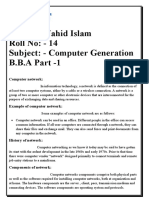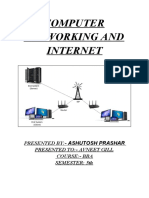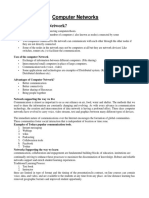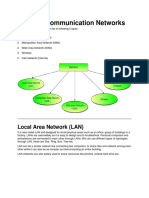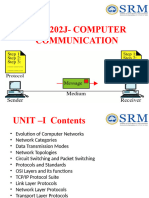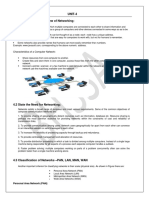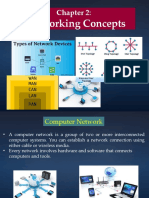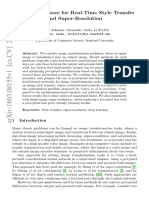0% found this document useful (0 votes)
21 views31 pagesComputer Network
A computer network is a system of interconnected devices that share resources and communicate using protocols. It has various applications, including resource sharing, communication, online education, and e-commerce, and can be categorized into Local Area Network (LAN), Metropolitan Area Network (MAN), and Wide Area Network (WAN). The Internet, a global network, connects billions of computers and enables various online activities while also presenting challenges such as cyber crimes and health issues.
Uploaded by
RajshreeCopyright
© © All Rights Reserved
We take content rights seriously. If you suspect this is your content, claim it here.
Available Formats
Download as PPTX, PDF, TXT or read online on Scribd
0% found this document useful (0 votes)
21 views31 pagesComputer Network
A computer network is a system of interconnected devices that share resources and communicate using protocols. It has various applications, including resource sharing, communication, online education, and e-commerce, and can be categorized into Local Area Network (LAN), Metropolitan Area Network (MAN), and Wide Area Network (WAN). The Internet, a global network, connects billions of computers and enables various online activities while also presenting challenges such as cyber crimes and health issues.
Uploaded by
RajshreeCopyright
© © All Rights Reserved
We take content rights seriously. If you suspect this is your content, claim it here.
Available Formats
Download as PPTX, PDF, TXT or read online on Scribd
/ 31

















